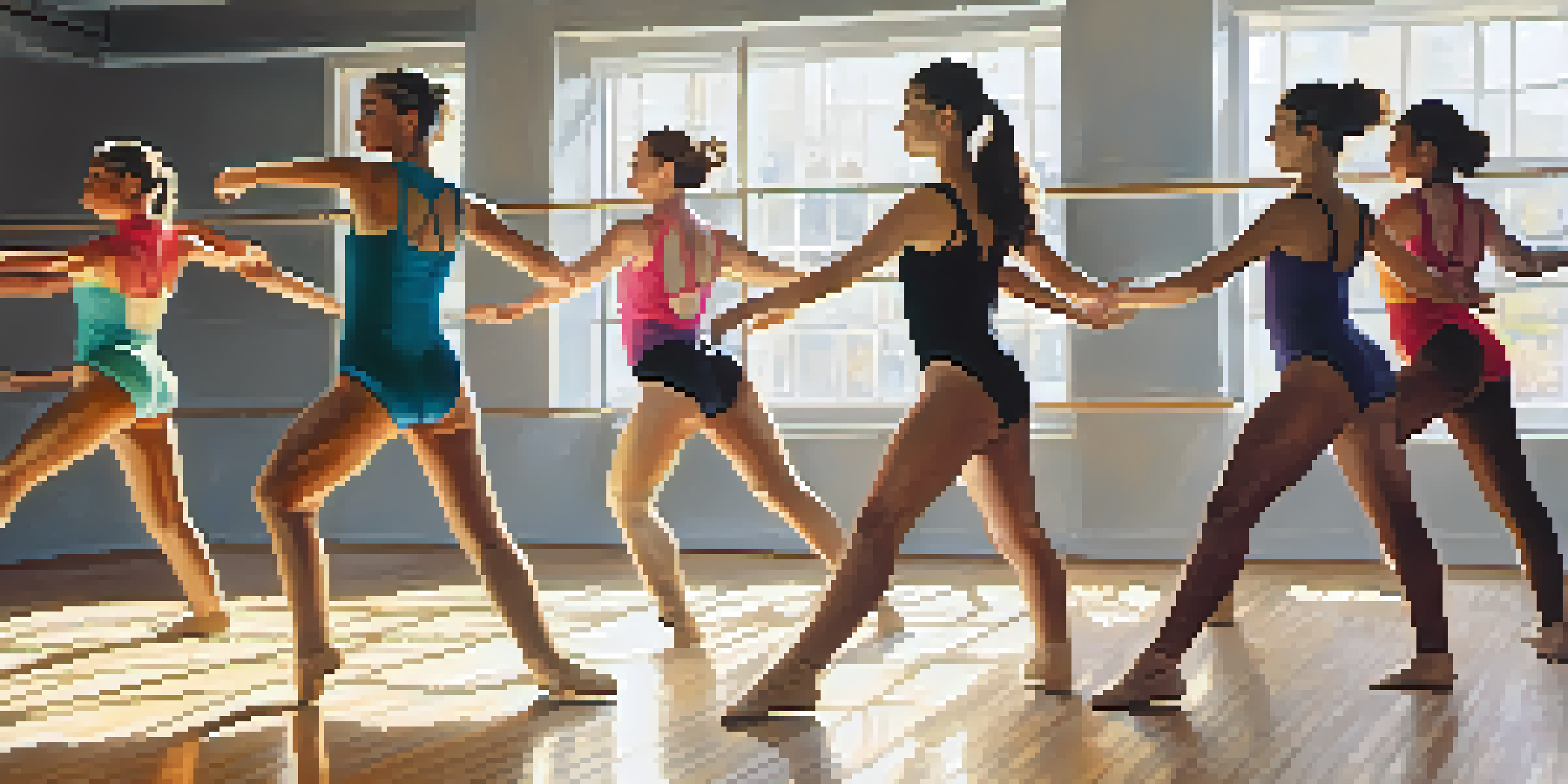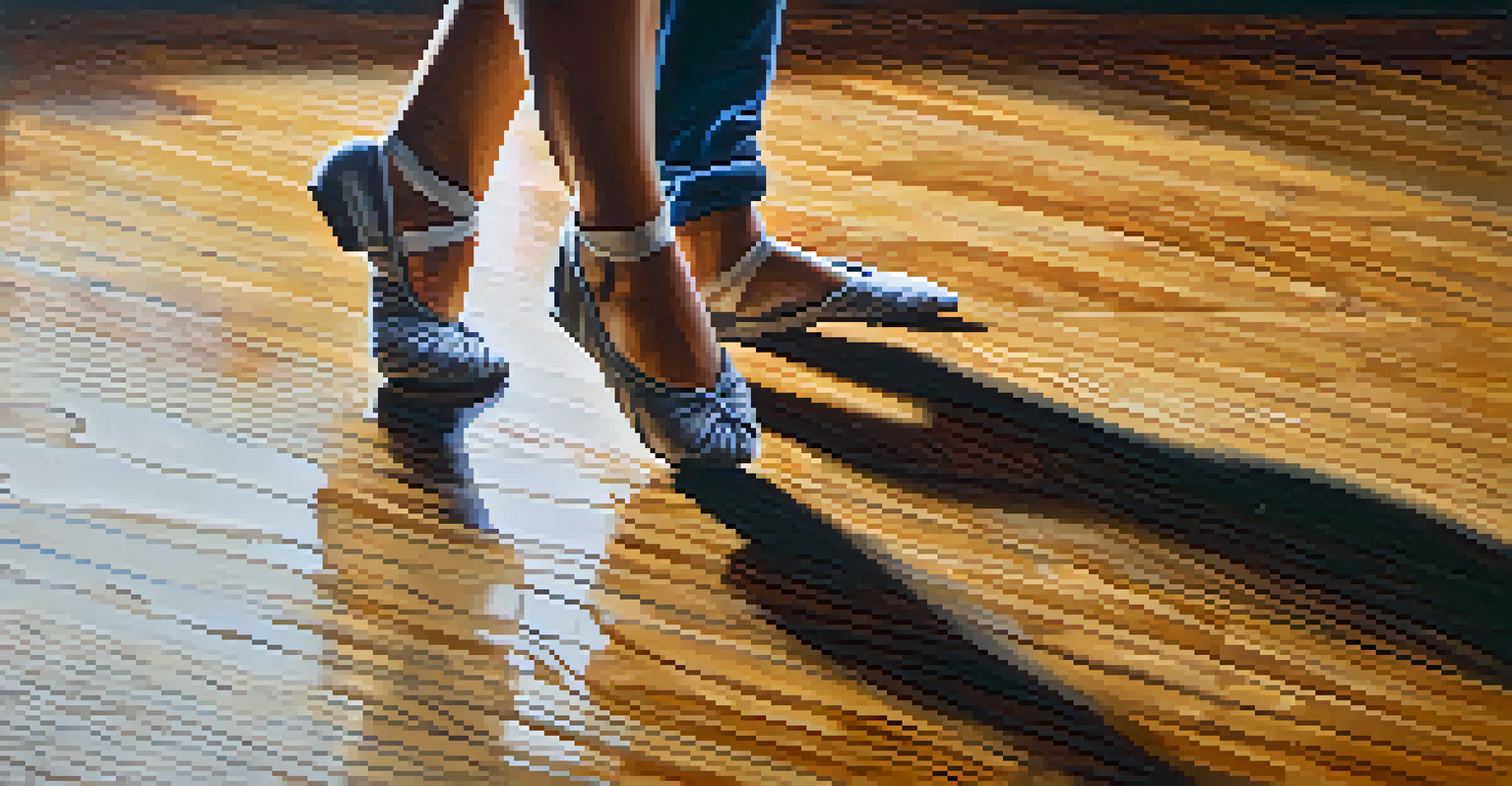The Significance of Improvisation in Dance Education

What is Improvisation in Dance Education?
Improvisation in dance is the spontaneous creation of movement without pre-planning. It's like jazz music where artists play off each other in real-time, allowing for unique expressions. In a dance class, this could mean encouraging students to move freely to music, letting their bodies interpret the sounds in an unstructured way.
Dance is the hidden language of the soul.
This practice fosters creativity, allowing dancers to experiment with forms and styles that they might not otherwise explore. By embracing improvisation, students can break away from rigid choreographed routines and discover their personal movement language. It’s about finding freedom within the dance and letting go of self-imposed limitations.
Moreover, improvisation cultivates an awareness of the body and its capabilities. Dancers learn to listen to their instincts and respond to the music, which can lead to unexpected and beautiful movements. This not only enhances their technical skills but also deepens their emotional connection to the art.
The Role of Improvisation in Developing Creativity
Improvisation is a powerful tool for enhancing creativity in dance education. When students are encouraged to explore their movement without constraints, they tap into their innate creativity. This process mirrors the way a painter chooses colors and shapes, allowing for personal expression that is both unique and meaningful.

By stepping outside of their comfort zones, dancers learn to approach problems from different angles. They begin to see dance as a form of expression rather than just a series of steps to memorize. This shift in perspective can lead to innovative choreography and a more profound appreciation for the art form.
Improvisation Boosts Creativity
Engaging in improvisation allows dancers to explore their movement freely, fostering unique expressions and innovative choreography.
Furthermore, engaging in improvisation helps students develop a sense of confidence in their abilities. As they experiment with movement and discover what feels right, they build trust in themselves as artists. This newfound confidence can extend beyond the dance studio, positively impacting other areas of their lives.
Improvisation as a Tool for Collaboration
In dance education, improvisation encourages collaboration among students. When dancers work together to create movement on the spot, they learn to communicate and build off each other's ideas. This dynamic interaction is much like a brainstorming session where everyone's input shapes the final outcome.
The only way to make sense out of change is to plunge into it, move with it, and join the dance.
Collaborative improvisation not only enhances social skills but also promotes a sense of community within the class. Dancers support each other's creativity and learn to appreciate diverse perspectives, fostering an inclusive environment. This collaboration can lead to stronger bonds among students and a greater sense of belonging.
Additionally, improvisational exercises often require dancers to be adaptable and responsive to their peers. This adaptability is crucial not only in dance but also in life, as it prepares students to handle unexpected situations with grace and creativity.
Building Confidence Through Improvisation
Confidence is a crucial element in any dancer's journey, and improvisation plays a key role in building it. As students engage in improvisational activities, they take risks, which can foster resilience. Just like learning to ride a bike, the more they practice and fall, the more skilled and confident they become.
Improvisation allows dancers to explore their unique styles without the fear of judgment. Knowing that it's okay to make mistakes and experiment can be liberating. This freedom to explore can lead to breakthroughs in their understanding of movement and their own bodies.
Collaboration Enhances Community
Through collaborative improvisation, dancers learn to communicate and build off each other's ideas, creating a supportive and inclusive environment.
Moreover, as students share their improvisational work with peers, they receive valuable feedback. This supportive environment encourages growth and reinforces the idea that each dancer's voice is important. Over time, this builds a solid foundation of self-esteem that dancers can carry with them throughout their artistic careers.
Improvisation Enhances Problem-Solving Skills
Improvisation in dance is an excellent way to enhance problem-solving skills. When students are faced with the challenge of creating movement spontaneously, they learn to think on their feet. This skill is akin to a chess player anticipating their opponent's moves and adjusting their strategy accordingly.
Through improvisation, dancers learn to assess situations quickly and respond effectively. For instance, if a dancer stumbles during a performance, their ability to improvise can turn a potential mishap into a creative moment. This adaptability is a valuable life skill that extends beyond the dance floor.
Additionally, improvisational practice requires a level of critical thinking as students evaluate their movements and the impact they have on the audience. This analytical approach not only sharpens their performance skills but also prepares them for various challenges in life.
The Emotional Benefits of Improvisation in Dance
Engaging in improvisation can have profound emotional benefits for dancers. It serves as an outlet for self-expression, allowing students to process their feelings through movement. Just as a writer uses words to convey emotions, dancers use their bodies to express what they may not be able to articulate.
This emotional exploration can lead to increased self-awareness and personal growth. Dancers might discover new aspects of themselves during improvisational exercises, gaining insights that can enhance their overall well-being. It's like peeling back layers of an onion; each movement reveals something deeper.
Confidence Through Risk-Taking
Improvisational activities help dancers build confidence by encouraging them to take risks and embrace their unique styles without fear of judgment.
Moreover, the joy of improvisation can boost overall mental health. The freedom and creativity involved in spontaneous movement can reduce stress and anxiety. This therapeutic aspect of dance creates a safe space for students to explore their emotions and foster a positive mindset.
Conclusion: Embracing Improvisation in Dance Education
In conclusion, improvisation holds significant value in dance education. It nurtures creativity, builds confidence, enhances collaboration, and develops problem-solving skills. By incorporating improvisational practice, educators can provide students with a richer, more holistic dance experience.
The benefits extend beyond the dance studio, equipping students with essential life skills such as adaptability and emotional intelligence. Encouraging improvisation allows dancers to connect with themselves and their peers on a deeper level, fostering a supportive community.

As we embrace the importance of improvisation in dance, let’s remember that it’s not just about the movements but the journey of self-discovery and expression that dance offers. By cultivating an environment where improvisation thrives, we empower future generations of dancers to explore and innovate.